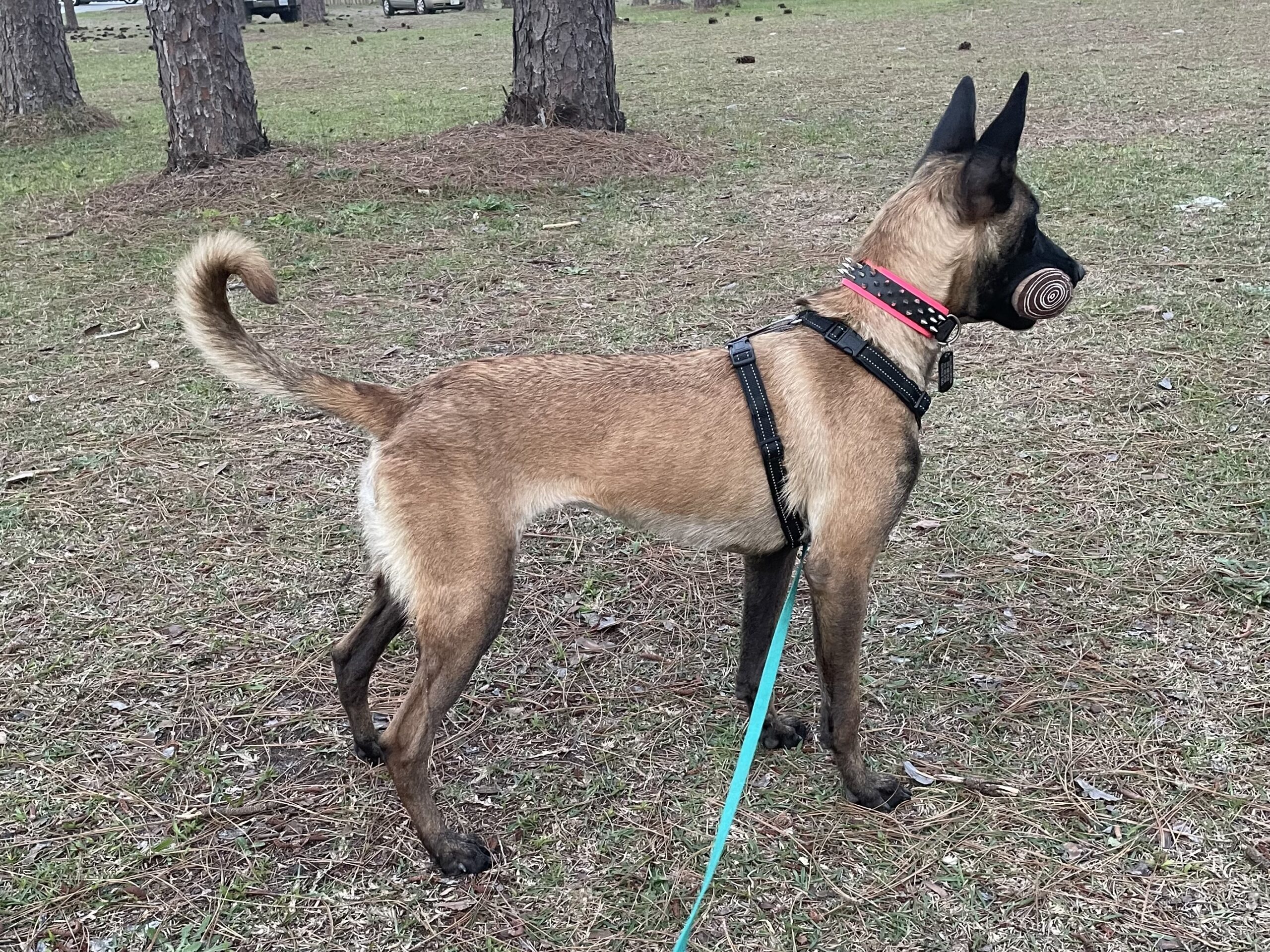Active support involves intervening on your dog’s behalf to prevent undesirable situations and behaviors. When you intervene with your dog, you’re utilizing your skills. When you intervene with the trigger, you’re advocating for your dog.
Timing is the most essentail piece when it comes to utilizing skills for a behavior plan. Keep an eye on your dog’s behavior and closely monitor how they’re feeling.
If your dog is feeling good, there’s no need to intervene.
When you start seeing some minor stress signals, it’s time to intervene – cue your dog and start practicing one of your training routines while you manage your distance from the trigger. In the photo above, Leaf the Malinois had just entered the Yellow Zone. You can tell by looking at her body language – she is stiff, her tail is up and rigid, her ears are erect and angled far forward, and her body is angled like an arrow towards the trigger. It’s hard to see movement in a photo, but she was completely frozen. Right after taking this pic, we started playing some behavior games!
If your dog goes over threshold and starts barking, lunging, or growling – it’s time to get out of there! Make distance, put a barrier between you and the trigger, or leave the area entirely.
Green Zone
Loosey-goosey body language.
All is good in the world! No triggers or stressors are present, and your dog is not in need of any support.
Let your dog be a dog!
They can sniff, explore, and enjoy themselves.
Yellow Zone
Yawning, lip licking, shake-offs, staring, & body tension.
Your dog has noticed a trigger, but they are still able to make good decisions with your support.
Support your dog using training games and learned skills. Manage your distance from the trigger.
Red Zone
Barking, lunging, & growling.
Your dog is over threshold! They are overwhelmed and are unable to make good decisions!
Get out of there!
Make distance, avocate for yoru dog, duck behind a barrier, or leave entirely.
We want to spend as much time as possible in the green zone – this is where life is good and the training feels almost boring. Some great work can be done in the yellow zone as well, but the most impactful training is done when our dogs are in the green zone.
Avoid the red zone at all costs! Too many visits to the red zone can cause training setbacks and exacerbate behavior issues.


